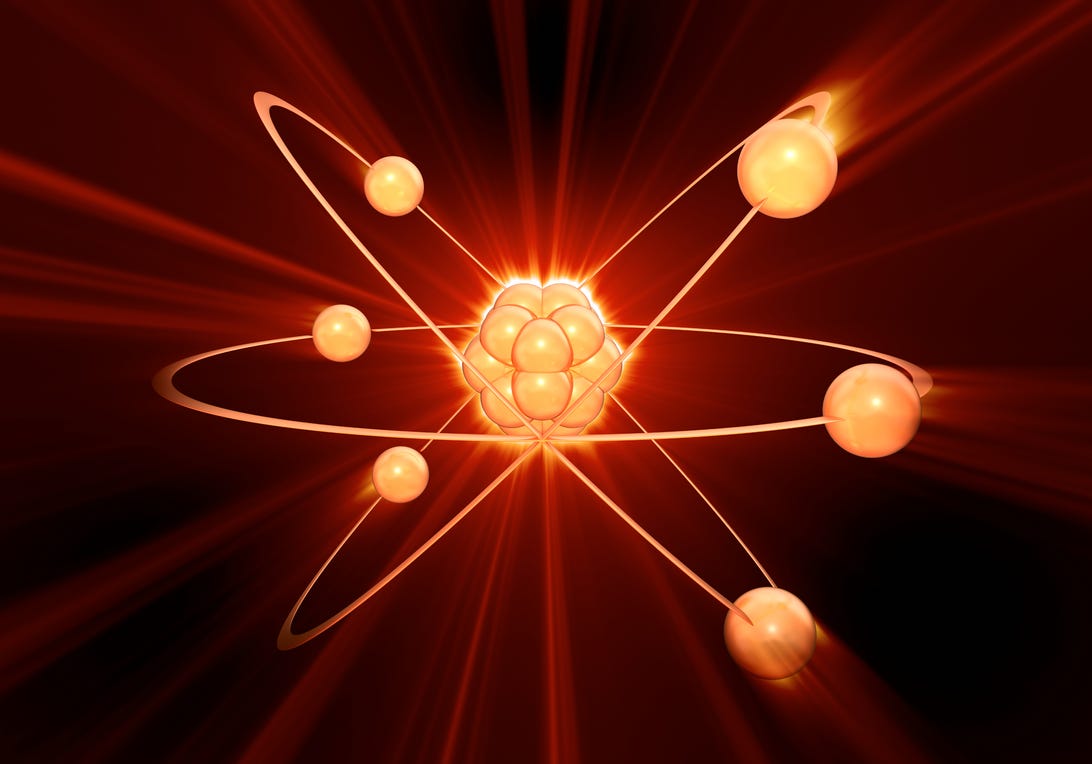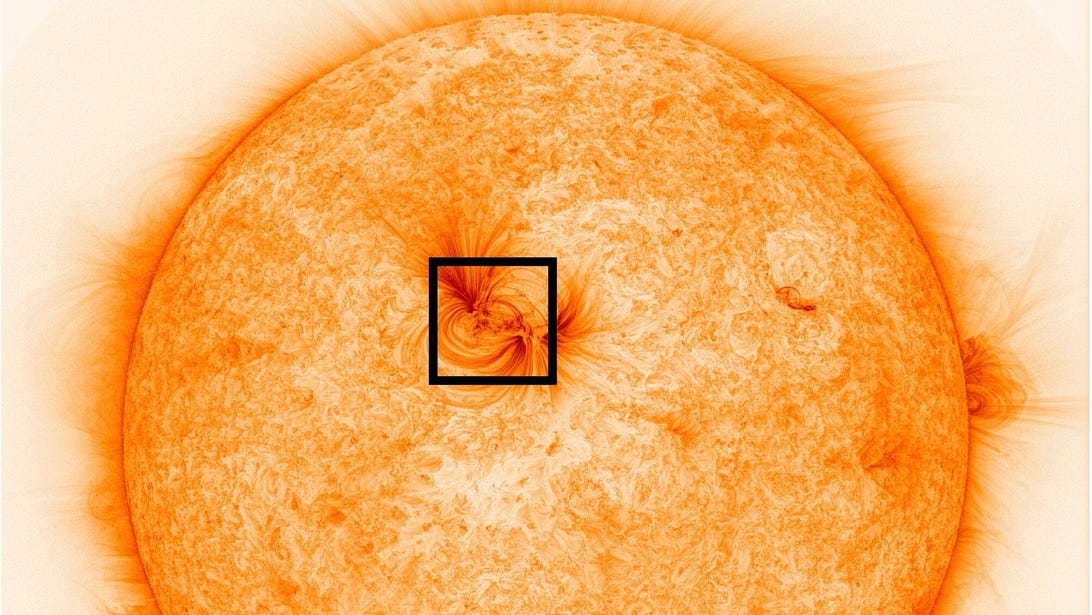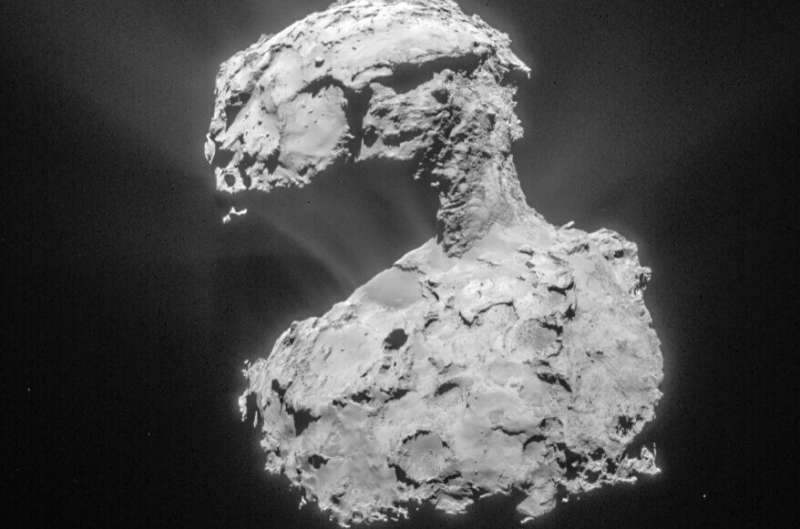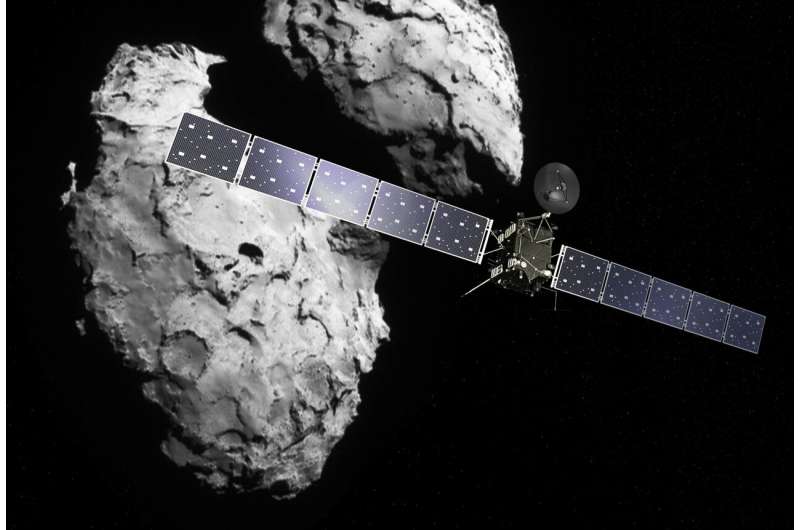The saga of how an odd hypothetical particle became a star dark matter candidate.
Monisha Ravisetti
March 13, 2022

Dark matter and dark energy make up more of the universe
Physics is permeated by conundrums, and in a sense, that's what keeps the field going. These mind-bending puzzles foster a race toward truth. But of all the dilemmas, I'd say two of them unquestionably fall under priority A.
First off, when scientists look up at the sky, they consistently see stars and galaxies traveling farther from our planet, and from each other, in every direction. The universe kind of looks like a bubble blowing up, which is how we've come to know it's expanding. But something doesn't make sense.
Space doesn't seem to have enough stuff floating around in it -- stars, particles, planets and all else -- for it to inflate so swiftly. In other words, the universe is expanding way faster than our physics says it can, and it's even picking up speed as you read this. Which brings us to problem two.
Per experts' best calculations, galaxies are spinning so incredibly quickly as everything zips around that we'd expect the spirals to behave like out-of-control merry-go-rounds flinging metal horses off the ride. There doesn't seem to be enough stuff in the universe to anchor them together. Yet the Milky Way isn't drifting apart.
So… what's going on?

A simulation of dark matter filaments across the universe.
As blanket terms, physicists call "missing" stuff pushing the cosmos outward dark energy, and pieces holding galaxies together -- presumably in a halo-like form -- dark matter. Neither interacts with light or matter we can see, so they're essentially invisible. Combined, dark matter and dark energy make up a whopping 95% of the universe.
Zeroing in on dark matter's portion, the authors of a recent review, published in the journal Science Advances, write that "it may well consist of one or more types of fundamental particle … although part or all of it might consist of macroscopic lumps of some invisible form of matter, such as black holes."
Black holes or not, dark matter is totally elusive.
The wide-eyed hypothesis of axions
You might've heard of the Standard Model, which is pretty much the holy grail, ever-strengthening handbook of particle physics. It outlines how every single particle in the universe works.
However, as the Science Advances review points out, some "particle physicists are restless and dissatisfied with the Standard Model because it has many theoretical shortcomings and leaves many pressing experimental questions unanswered." More specifically for us, it leads right into a paradox regarding a well-established scientific concept dubbed CPT invariance. Aha, the physics puzzles continue.

Galaxy and associated dark matter halo, illustration.
Basically, CPT invariance states that the universe must be symmetrical when it comes to C (charge), P (parity) and T (time). For that reason, it's also called CPT symmetry. If everything had the opposite charge, was left-handed instead of right-handed and traveled through time backward instead of forward, it states the universe should remain just the same.
For a long while, CPT symmetry seemed unbreakable. Then 1956 came around.
Long story short, scientists found something that violates the P part of CPT symmetry. It's called the weak force, and it dictates things like neutrino collisions and element fusion in the sun. Everyone was shocked, confused and scared.
Nearly every foundational concept of physics relies on CPT symmetry.
About a decade later, researchers discovered the weak force violating C symmetry, too. Things were falling apart. Physicists could just hope and pray that even if P is violated… and CP is violated… maybe CPT still isn't. Maybe weak forces just need the trio to uphold CPT symmetry. Thankfully, this theory seems correct. For some unknown reason, the weak force follows total CPT symmetry despite C and CP blips. Phew.
But here's the issue. If weak forces violate CP symmetry, you'd expect strong forces to as well, right? Well, they don't, and physicists don't know why. This is called the strong CP problem -- and precisely where things get interesting.
Neutrons -- uncharged particles within atoms -- abide by the strong force. Plus, allowing for simplification, their neutral charge means they violate T symmetry. And "if we find something that violates T symmetry, then it must also violate CP symmetry in such a way that the combination CPT is not violated," the paper states. But... that's weird. Neutrons don't because of the strong CP problem.
And so the idea of the axion was born.

Neutrons are uncharged particles right in the center clump of atoms.
Years ago, physicists Roberto Peccei and Helen Quinn suggested adding a new dimension to the Standard Model. It involved a field of ultralight particles -- axions -- that explained the strong CP problem, thereby relaxing the conditions for neutrons. Axions appeared to fix everything so well that the duo's idea became the "most popular solution to the strong CP problem," the paper states. It was a miracle.
To be clear, axions are still hypothetical, but think about what just happened. Physicists added a new particle to the Standard Model, which outlines specks of the entire universe. What might that mean for everything else?
The key to dark matter?
Per the Peccei-Quinn theory, axions would be "cold," or very slowly moving through space. And… the study researchers say "the existence of [dark matter] is inferred from its gravitational effects, and astrophysical observations suggest that it is 'cold.'"
The paper also states, "there are experimental upper limits on how strongly [the axion] interacts with the visible matter."
So, basically, axions that help explain the strong CP problem also seem to have theoretical properties that align with those of dark matter. Extremely well.
The European Council for Nuclear Research, better known as CERN, which runs the Large Hadron Collider and is leading the charge for antimatter studies, also underlines "one of the most suggestive properties of axions is that, in a natural way, they could be produced in huge numbers soon after the Big Bang. This population of axions would still be present today and could compose the dark matter of the universe."

One SLAC research area is reconstructing the formation of the universe. We're familiar with galaxies, but this simulation shows strands of dark matter that lace the cosmos. Galaxies form at the brighter nodes where the density is highest.
There you go. Axions are among the hottest topic in physics because they seem to explain so much. But once again, those sought-after bits are still hypothetical.
Will we ever find axions?
It's been 40 years since scientists began hunting for axions.
Most of these searches are "mainly exploiting the action field interaction with the electromagnetic fields," say the authors in that recent review published in Science Advances.
For instance, CERN developed the Axion Search Telescope, a machine built to find a hint of the particles produced in the sun's core. Inside our star, there are strong electric fields that could potentially interact with axions -- if they're really there, that is.

A NASA solar sounding rocket mission reveals a stunning view of super-hot magnetic threads in the sun's atmosphere.
But the quest has so far faced a few pretty big challenges. For one, "the particle mass is not theoretically predictable," the authors write -- that is, we have very little idea of what an axion might look like.
Right now, scientists are still searching for them while assuming a vastly wide range of masses. Recently, however, researchers offered evidence that the particle is likely between 40 and 180 microelectron volts. That's unthinkably small, at about 1 billionth the mass of an electron.
"In addition," the team writes, "the axion signal is expected to be very narrow ... and extremely feeble due to very weak couplings to Standard Model particles and fields." In essence, even if minuscule axions try their very best to signal their existence to us, we might miss them. Their cues could be so weak we'd barely notice.
Despite these hurdles, the axion search marches on. Most scientists argue that they must be out there somewhere but they seem too good to be true when it comes to fully explaining dark matter.
"Most experimental attempts assume that axions compose 100% of the dark matter halo," the study authors emphasize, suggesting that perhaps there's a way to "look into axion physics without relying on such an assumption."
Though they may be the star of the show, what if axions are just one chapter of dark matter history?
First published on March 10, 2022
















